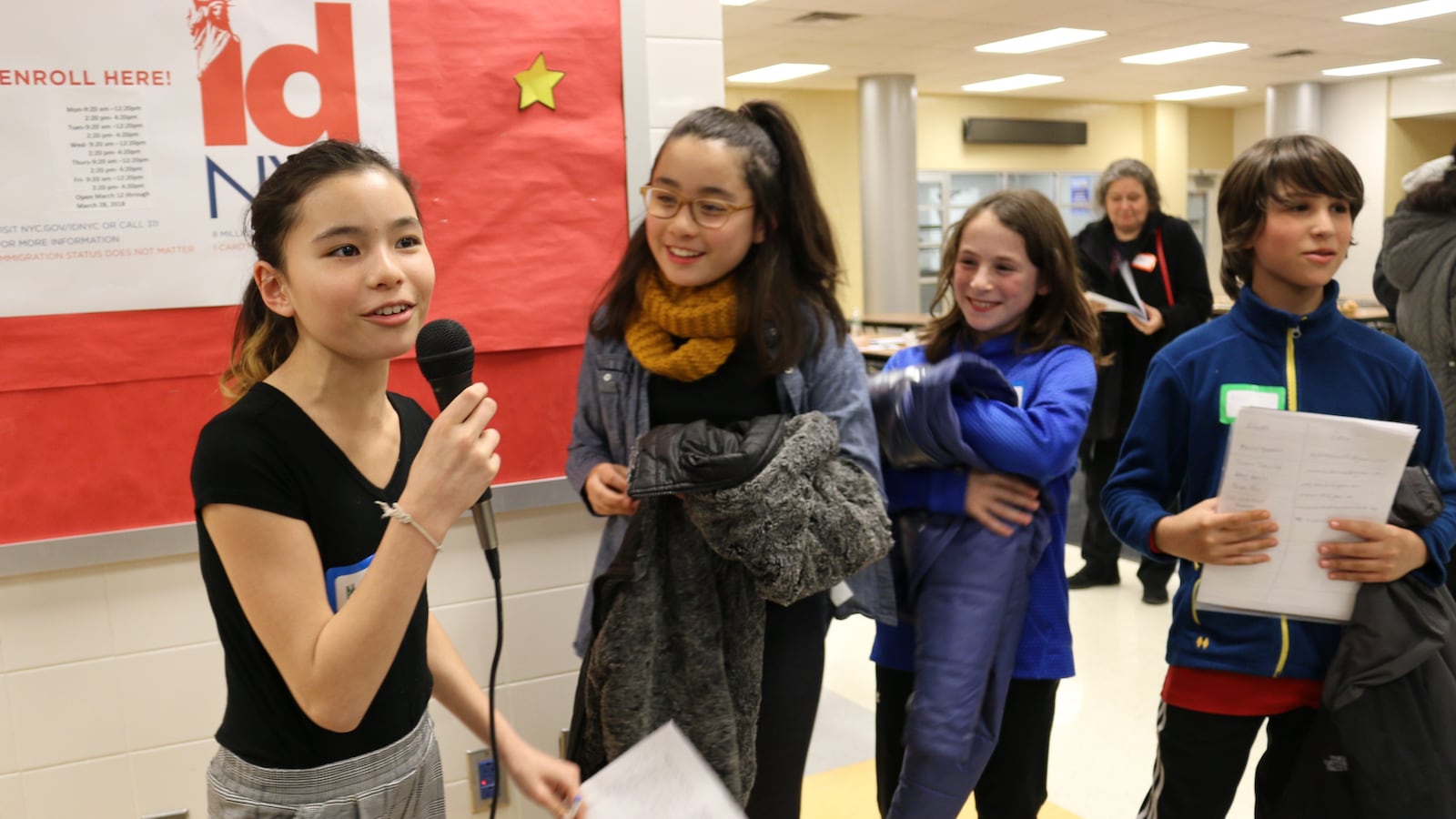While they learned about the history of segregation, a group of Brooklyn 11-year-olds took a good look around their classrooms and realized their schools weren’t so different from the photos in their textbooks.
So Matilda and Eliza Seki paired up with their friends Noa and Benji Weiss — two sets of twins — and decided to do something about it. They launched a petition on Change.org calling on the city to integrate its schools.
“We learned about separate and equal in the civil rights movement, and that it was not equal,” Eliza said, referring to the “separate but equal” legal doctrine once used to justify segregation. “And since there are schools with people of only one race, and it’s all separated, it cannot be equal.”
Matilda and Eliza are in the sixth grade at M.S. 839, and Noa and Benji are fifth-graders at P.S. 10. They already have a bit of experience in activism, having joined the Women’s March in D.C., and helping to lead environmental clubs at their school. They hold sophisticated views for kids their age, and are aware of the hurdles ingrained in addressing school segregation.
Describing how housing patterns can tie into school quality, Benji began his thoughts by saying: “Let’s say you’re from a different culture or race and you don’t have as much money as other people do — because we still live in a racist country — and you’re in an area where the housing is cheaper but you don’t have as good schools.”
Across New York City, adults have debated how to spur integration in the country’s largest school system — and one of the most segregated. According to one recent analysis, the city’s most selective high schools enroll 84 percent white and Asian students, even though those groups make up only 30 percent of the city’s student enrollment.
But student-organized groups have also been at the forefront of a grassroots movement for more diverse schools. The work of budding advocates Matilda, Eliza, Noa and Benji caught the attention of some those groups, and they’ve now joined the ranks of Teens Take Charge and IntegrateNYC as some of the youngest members. The changes they’d like to see go beyond admissions policies, but also include a push for additional resources for underserved schools, hiring more teachers of color and curricula that reflects all students and cultures.
“We decided it was an important issue and we wanted to help fix it,” Noa said.
Matilda added: “Our schools should look like our city.”
Their schools are in District 15, where 81 percent of white students are concentrated in just three of the district’s most selective middle schools, according to an analysis by parents. The city has launched a series of public workshops to craft a new admissions model to integrate middle schools there, but these kids already have their own ideas for how to do that.
Benji, who is heading to middle school next year, said it would be “pretty good” if schools stopped picking students based on criteria such as class grades and attendance. Such “screening” contributes to segregation because of a number of factors — from which elementary schools students attend, to their parents’ ability to navigate the complicated admissions process.
“It’s… important to learn about different peoples’ backgrounds, and religions, and cultures,” he said. “And also to make sure that all kids, no matter their race, religion or where they live can get the same, good education.”


